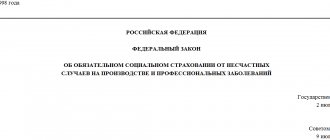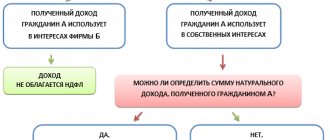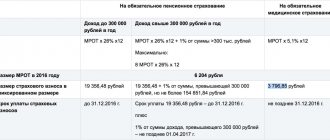What is the new contribution limit for 2020?
The maximum base for calculating insurance premiums in 2020 affects two types of contributions:
- for compulsory social insurance (OSI) in case of temporary disability (sick leave) and in connection with maternity (paid to the Social Insurance Fund);
- for compulsory pension insurance (OPI) (paid to the Pension Fund).
According to the decree of the Russian Government, the maximum value of the insurance premium base in 2021 is:
- contributions in case of temporary disability and maternity – 912,000 rubles inclusive ;
- contributions to compulsory health insurance – 1,292,000 rubles inclusive .
As for the maximum base for medical contributions for 2021, it has not been established since 2015. That is, regardless of the cumulative income, insurance premiums for compulsory medical insurance must continue to be accrued and paid in the general manner.
Contribution limits in 2021: table
Below we present the values of the base for insurance premiums in 2021 in the table. You can also compare them in 2021.
| Contributions | Limit on accrual of insurance premiums | Rate | |
| 2018 | 2019 | ||
| Pension contributions (general rates) | Up to 1,021,000 | Up to 1,150,000 | 22% |
| Over 1,021,000 | Over 1,150,000 | 10% | |
| Contributions for illness and maternity | Up to 815,000 | Up to 865,000 | 2,9% |
| Over 815,000 | Over 865,000 | – | |
| Medical fees | There is no limit base | 5,1% | |
| Contributions to the Pension Fund at an additional rate | from 0 to 9% | ||
| Contributions for injuries | from 0.2 to 8.5% | ||
How the maximum base of insurance premiums has changed since 2021
In 2021, the maximum value of the insurance premium base was (Resolution of the Government of the Russian Federation dated November 28, 2018 No. 1426):
- contributions in case of temporary disability and maternity – 865,000 rubles;
- contributions to compulsory pension insurance – 1,150,000 rubles.
Thus, the base for excess insurance premiums for 2021 compared to 2019:
- for insurance premiums for OSS in case of temporary disability and maternity – increased by 5.4 % ;
- for insurance premiums for compulsory health insurance – increased by 12.3%.
The growth of the base for calculating insurance premiums in 2021 is due to the fact that, by law, the Government of the Russian Federation is obliged to index the maximum values of the base annually according to the growth of average wages in Russia. This is evidenced, in particular, by paragraphs 4 and 6 of Art. 421 of the Tax Code of the Russian Federation. Therefore, a slight increase in the maximum contribution base occurs every year.
REFERENCE
According to the parameters developed by the Ministry of Economic Development of the Russian Federation for the forecast of socio-economic development of Russia for 2021 and the planning period of 2021 and 2022. the average monthly accrued salary per employee in 2021 is 48,942 rubles (in 2019 – 46,432 rubles).
Thus, the size of the nominal accrued average monthly salary per employee in 2021 compared to 2021 increased by 5.4% (48,942: 46,432 = 1.054).
In addition, according to the law, the limit of the taxable base for insurance premiums in 2021 for compulsory insurance is established taking into account (clause 5 of Article 421 of the Tax Code of the Russian Federation):
- the average salary in the Russian Federation determined for 2021, increased by 12 times;
- increasing coefficient for 2021, which is equal to 2.2.
As a result, here is how the exact amount of the maximum base of insurance premiums in 2021 was obtained:
- in case of temporary disability/maternity in relation to each individual, taking into account indexation: 865,000 × 1.054 = 911,710 rubles, taking into account rounding - 912,000 rubles ;
- for OPS, taking into account the increasing factor of 2.2: 48,942 × 12 × 2.2 = 1,292,068.8 rubles, taking into account rounding - 1,292,000 rubles .
How to calculate insurance premiums
Learn more about how to correctly calculate the base and determine payments for social positions.
Insurance payments are calculated based on the results of the month of work, after the amounts have been calculated for each employee. Accounting is carried out separately, with the base determined for each payer in the order given above.
After all the accruals are added up, those positions that are not subject to deduction by law are taken away from them.
Calculations are made separately for each position.
It is easier to consider the procedure for calculating insurance deductions for a specific payer using an example.
Employee K received the following payments for January of the current year (in rubles):
- earnings – 15,000;
- bonus – 2,000;
- financial assistance – 4,200.
Article on the topic: Peculiarities of taxation of sick leave with insurance premiums
The base for calculating insurance premiums will be:
B = 15,000 + 2,000 + 4,200 – 4,000 = 17,200 rubles.
To the Pension Fund you must pay: Вп = 17,200 × 22% = 3,784 rubles;
The amount of accruals to the Social Insurance Fund will be: Sun = 17,200 × 2.9% = 498.80 rubles;
Contributions to compulsory medical insurance are equal: Vm = 17,200 × 5.1% = 877.20 rubles.
The total amount of calculated social insurance payments will be: B = 3,784 + 498.80 + 877.20 = 5,160 rubles.
What is the meaning of the base limit for insurance premiums for 2021?
When the amount of payments to each employee during the year reaches the cumulative total of the limit value (see above), the procedure for calculating contributions changes from exceeding the limit base in 2021. Namely:
- contributions in case of temporary disability/maternity cease to accrue ;
- contributions to compulsory pension insurance are charged at a lower rate of 10%.
EXAMPLE 1
In 2021, Shirokova’s salary at Guru LLC, according to the employment contract, is 150,000 rubles (let’s agree that there are no other payments subject to insurance contributions). Thus, her income from January to June inclusive will be:
150,000 rub. × 6 months = 900,000 rub.
That is, during these months there is no excess of the maximum base for contributions to OSS (912,000 rubles).
Taking into account July 2021, its cumulative income from the beginning of the year will be:
150,000 rub. × 7 months = 1,050,000 rub.
It will exceed the maximum base for contributions to OSS for cases of disability and maternity in 2021:
912,000 rub. <1,050,000 rub.
This means that the accounting department of Guru LLC must stop calculating and paying insurance premiums for OSS (2.9%) from July 2021. Including starting from the following amount of excess of the base:
RUB 1,050,000 – 912,000 rub. = 138,000 rub.
EXAMPLE 2
In 2021, Shirokova’s salary at Guru LLC, according to the employment contract, is 150,000 rubles (let’s agree that there are no other payments subject to insurance contributions). Thus, her income from January to August inclusive will be:
150,000 rub. × 8 months = 1,200,000 rub.
That is, during these months there is no excess of the maximum base for contributions to compulsory health insurance (RUB 1,292,000).
Taking into account September 2021, its cumulative income from the beginning of the year will be:
150,000 rub. × 9 months = 1,350,000 rub.
It will exceed the maximum base for contributions to compulsory health insurance in 2021:
RUB 1,292,000 <1,350,000 rub.
This means that from September 2021, the accounting department of Guru LLC should begin to calculate and pay insurance premiums for compulsory health insurance for Shirokova at a reduced rate of 10%, and not the general 22%. Including the following amount of excess of the base:
RUB 1,350,000 – 1,292,000 rub. = 58,000 rub.
What is included in the base for calculating insurance premiums
The base from which insurance premiums are calculated and data for calculation is selected is determined from the following types of transfers:
- wages;
- bonus;
- vacation pay;
- other additional payments, including part of financial assistance exceeding 4,000 rubles paid during the year.
There is no provision for deduction of social sums from the following payments:
- state benefits, including payments to the unemployed and women, at the birth of a baby and caring for a baby;
- calculated, if the amount of these payments did not exceed three times the average monthly salary;
- remuneration within the framework of a civil labor contract that does not provide for the withholding of social insurance (except for medical);
- one-time payments, including as compensation for damage caused by a natural or man-made disaster;
- material assistance provided to an employee by an enterprise in an amount not exceeding 4,000 rubles. in year;
- payments made to foreign nationals or stateless persons under concluded GPA.
Related article: Is compensation for a medical examination subject to insurance premiums?
All other amounts that relate to payments that are not subject to exclusion must be included in the base for calculating contributions for social insurance.
Features of contributions to the Pension Fund
Please note that contributions to the Pension Fund for exceeding the maximum base in 2020 are calculated when they are calculated according to basic tariffs. But when calculating contributions to compulsory health insurance at additional tariffs, the maximum base value does not apply (clause 5 of Article 421 of the Tax Code of the Russian Federation). That is, they continue to be charged at a rate corresponding to the class of working conditions.
EXAMPLE
Shirokova at Guru Processing LLC is employed in hazardous production and, according to her employment contract, receives 150,000 rubles per month. The subclass of her working conditions is 3.2, the additional tariff rate for it is 4%.
That is, for the entire year 2021, the accounting department of Guru LLC charges insurance premiums for compulsory health insurance at a rate of 22% + 4% from 150,000 rubles per month.
When paying pension insurance contributions at reduced rates (Article 427 of the Tax Code of the Russian Federation) from amounts of payments to individuals exceeding the maximum base value for this type of insurance, contributions are not calculated or paid (letter of the Ministry of Finance dated August 13, 2019 No. 03-15-06/61097 ).
EXAMPLE
Shirokova works for an IT company that pays insurance premiums for compulsory health insurance at a reduced rate - 8% (Article 427 of the Tax Code of the Russian Federation). In 2020, Shirokova’s salary at Guru Soft LLC, according to the employment contract, is 150,000 rubles (let’s agree that there are no other payments subject to insurance contributions).
Thus, her income from January to August inclusive will be:
150,000 rub. × 8 months = 1,200,000 rub.
That is, during these months there is no excess of the maximum base for contributions to compulsory health insurance (RUB 1,292,000).
Taking into account September 2021, its cumulative income from the beginning of the year will be:
150,000 rub. × 9 months = 1,350,000 rub.
It will exceed the maximum base for contributions to compulsory health insurance in 2021:
RUB 1,292,000 <1,350,000 rub.
This means that the accounting department of Guru LLC, starting from September 2021, must stop accruing and paying insurance premiums for compulsory health insurance for Shirokova from the following amount of excess of the base:
RUB 1,350,000 – 1,292,000 rub. = 58,000 rub.
Read also
23.09.2019
How to fill out Table 1 with the form for calculating the base for calculating insurance premiums
The results of calculating the base for calculating insurance premiums must be formalized in accordance with Table 1 specified in Order No. 381 of the Federal Insurance Service of the Russian Federation, issued in September 2021.
The table, which is a reporting form of calculation, is filled out with the following information indicated in the lines:
- in the first - accruals included in the base that allows you to determine the amount of deductions, in accordance with legislative norms;
- in the second - amounts excluded from the base for calculating payments;
- in the third – the difference between the first and second lines, which is the basic indicator for calculating payments;
- in the fourth – insurance payments for employed disabled people;
- in the fifth - indicators on insurance rates used in the calculation;
- in the sixth - discounts determined by the degree of professional risk for a specific enterprise (or its individual division);
- in the seventh - the amount of the premium provided for by law;
- in the eighth - indication of the date on which the order of the territorial unit of the Social Insurance Fund was issued, establishing the tariff premium;
- in the ninth - the final indicator of the insurance tariff minus the discount and after adding the established premiums.
All listed values are summarized in a table, the accuracy of which is confirmed by the signature of the chief accountant of the enterprise. Additionally, in the fields specially provided for this, information is entered that allows you to identify the payer organization, indicating the registration number of the policyholder, the number of pages in the document and the code of subordination.
Related article: Contributions to OSS in case of disability or in connection with maternity
The amount of social contributions of the enterprise depends on the correctness of the methodology for calculating the base for calculating insurance premiums. The calculation method is very simple, but it is important to correctly take into account all the amounts to be included in the calculation formula so as not to be mistaken with the final results for calculating the amount of payments.
Point formula
The contribution limit set for each year has a major impact on the number of points you earn that count towards your pension.
In the formula for calculating the score, this indicator is in the denominator; accordingly, the larger the base, the fewer points you will earn. And the fewer points, the lower the pension.
That is, an annual increase in the maximum base leads to an annual decrease in the number of points earned, all other things being equal.
The formula for calculating the score is:
IPC = SV / SVmax * 10
IPC - individual pension coefficient (point);
SV - the amount of contributions at the individual rate (your salary for the year * 16%);
SVmax – the amount of contributions at the individual rate from the maximum base (maximum base * 16%).
At the same time, there is a limit on the number of points that the Pension Fund will award you. Those who have a small salary are not interested in this restriction. They still don't reach the maximum. But those who earn decent money should know that not all contributions paid by the employer (even taking into account the “cut-off” rate of 16%) will be reflected in their future pension. No matter how huge the salary is, you can’t jump above the ceiling in terms of points.
| Year | Maximum points |
| 2018 | 8,7 |
| 2019 | 9,13 |
| 2020 | 9,57 |
| 2021 | 10 |
By the way, about the tariff. Do not forget that not all 22% of the contributions paid from your salary by your employer are reflected in your individual personal account with the Pension Fund. The tariff is divided into 2 parts - individual (16%) and joint (6%). The number of points earned is calculated only on the basis of the individual part.
If your employer pays contributions at a reduced rate, this will not affect the number of points. The calculation is based on the salary amount.
Source:
"Clerk"
Categories:
Pensions, Insurance contributions
maximum value of the base for calculating insurance contributions pension point pension
- Natalya Petrova, editor of “Clerk”
Sign up 8645
12350 ₽
–30%










